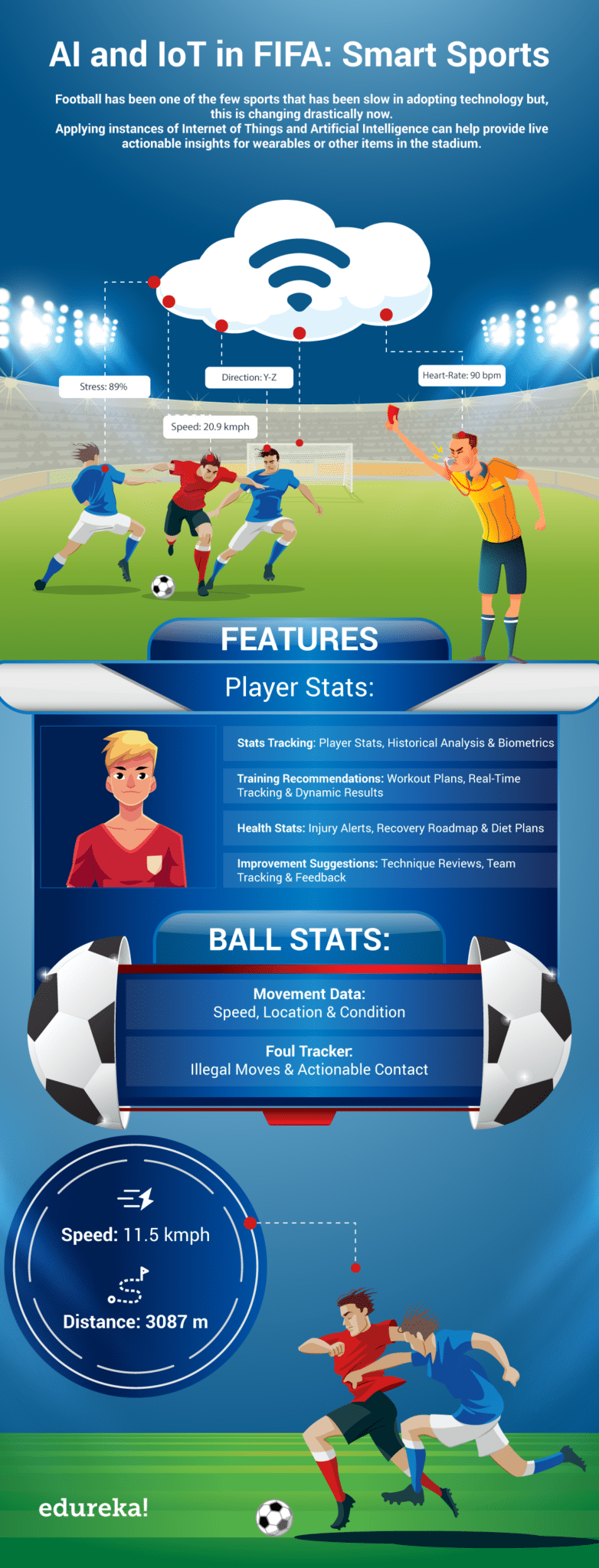AI and IoT in FIFA: Smart Sports
Most football enthusiasts will know that the sport has been a bit slower than others when it comes to adopting new technologies. There are several speculated reasons for this — the game’s age and the fact that it is dominated by traditionalists — to name a few. Nevertheless, this year’s football world cup seems to have strongly deviated from this trend. Using technologies like AI and IoT in FIFA is changing the way the game is played and enjoyed by fans.
Table of Content
If you didn’t know already, the Russian world cup is bringing in a lot of modernization into the game. These include explicit front-end additions like the goal line tracking and the video-assisted referee systems and implicit, team-oriented technologies like the electronic performance tracking system.
Let us explore how these technologies work and where their roots lie through the following infographic.


IoT Certification Training on Azure
- Instructor-led Sessions
- Real-life Case Studies
- Assignments
- Lifetime Access
Explore Curriculum
The above image is just an illustration of what can be achieved using technologies like artificial intelligence and internet of things in the field of football. Let’s now elaborate on how these new-age innovations make the game better, and also look at a few real-world applications that are in play at the 2018 World Cup.
Dawn of a New Age: AI and IoT in FIFA
Just a few years back, tracking player performance and stats was a difficult task. Most team managers and coaches relied on data collected externally or data that could be measured after plays. With technologies like IoT out in the market, this was an obsolete approach. IoT makes data collection convenient. In fact, unlike old technologies, IoT allows collection of more data in real-time.
Let’s take an example here. If you wanted to collect the performance stats of a player in your team five years ago, you needed heavy equipment placed around the stadium to measure the movement and speed of a player. For other personal stats like heart-rate and stress level, a player had to wear equipment which would measure the data and coaches and medical personnel could review it only after the play was over.
